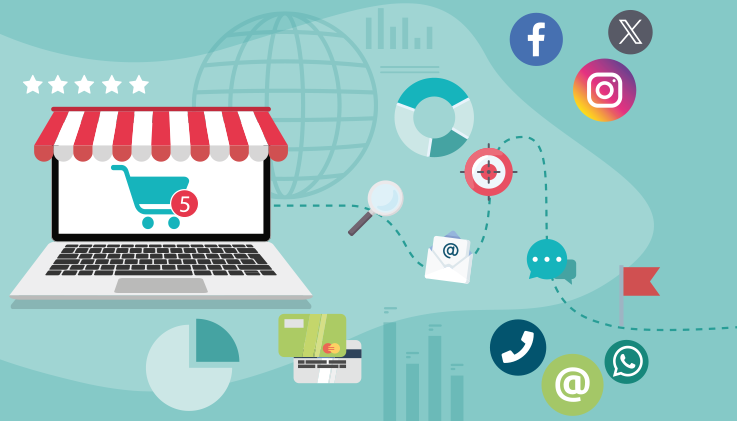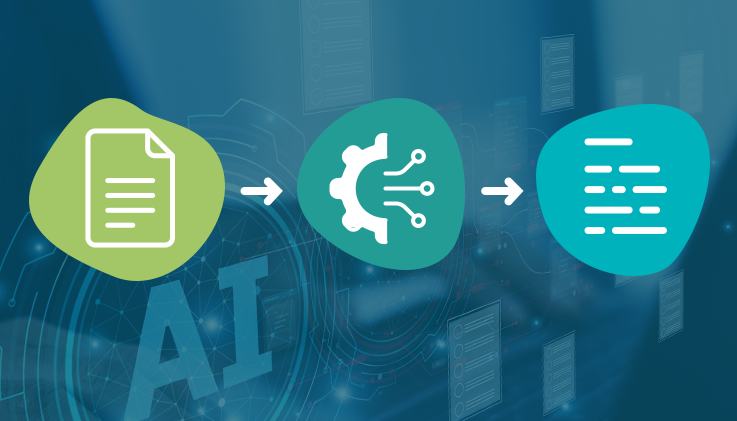360-Degree Visibility: Understanding Behavior Across Customer Touchpoints

Is your team grappling with meeting heightened customer expectations amidst resource constraints and mounting economic pressures? A common misconception in the customer support industry is that you have to choose between a great customer experience (CX) or satisfied employees. But the truth is, you can do all that and more by tracking customer behavior across customer touchpoints.
Accurate data and analytics from touchpoints can drive operational efficiency, revenue growth, and improve CX. The goal is to comprehensively understand each customer’s preferences, needs, and behavior across all channels and use that information to deliver more personalized and relevant experiences.
Also read: AI Quality Management – Driving Customer Service Excellence
Decoding customer touchpoints: what they are and why they matter
Touchpoints are all points of contact between a business and a customer, from start to finish. This includes all online and offline interactions customers experience with a brand throughout their journey. In one of our previous articles, we discussed the significance of customer touchpoints to create an unforgettable customer experience. However, in this blog, we shall discuss monitoring customer behavior across touchpoints.
In the modern business landscape, data serves as the compass guiding organizations through the intricacies of customer behavior across various touchpoints. Collecting and analyzing customer data can be a time-consuming and resource-intensive process. This is where AI comes in. By analyzing each customer’s interactions across multiple channels and touchpoints, AI can provide highly accurate insights and predictions about the various segments your clients may belong to. This way, businesses get a 360-degree view of the customer—even with limited data.
AI-driven analysis of customer behavior can predict their needs and suggest personalized selling points based on their profile and personal preferences. Businesses can also personalize their messaging and engage with customers on a more individual level, driving deeper connections and increased loyalty. This is why it is important to look into some aspects that are intrinsic to monitoring customer behavior across touchpoints.
- Identify your customer touchpoints: List the different ways your customers interact with your brand. This can include your website, social media pages, email marketing campaigns, customer support tickets, and even data from physical or online stores, like the number of footfalls, inquiries about products/services, and demos.
- Collect data from your customer touchpoints: There are various ways to collect data from your customer touchpoints. Each brand’s touchpoints are also utilized differently depending on where a customer is in their journey. Data can be collected from customer feedback and surveys, live chat data, and customer profiling. Utilizing the ticketing system, information about customer queries, issues, and requests can be collected. Each ticket can capture details such as the customer's name, contact information, issue description, and priority level. Integrating social media channels with customer care software also helps track data regarding their behavior on social media.
- Unify customer data: Customer data from touchpoints must be viewed in a unified manner. That means data from multiple sources must come together to give you a complete and cohesive picture of the customer. You gain a holistic view of each customer by consolidating information from various touchpoints such as interactions, purchases, issue resolution processes, and preferences. This will allow you to track customer behavior across all their interactions with your brand.
- Analyze customer data: Various tools can be used to analyze customer data and identify trends. For example, customer journey mapping can visualize how customers move from one touchpoint to another and determine which touchpoints are most influential and engage customers. After analyzing data, you can take action to improve the customer experience and increase conversions. For example, you could identify and fix any broken touchpoints or create more personalized messages.
Leveraging help desk features to monitor behavior across customer touchpoints
Monitoring customer behavior across multiple touchpoints using help desk software involves leveraging various features and strategies within the platform. Here is a step-by-step guide.
1. Use customer support software or integrate your help desk with other systems
Help desk software makes resolving queries easy by streamlining ticket management through automation and highly optimized process workflows. Besides simplifying how businesses handle customer communication across multiple channels, the all-in-one support solution further captures and centralizes customer queries and issues from different customer touchpoints. This creates a centralized hub for managing customer interactions and addressing their queries. Also, thanks to the integration feature, integrating your help desk with your existing business solutions like customer data platform (CDP) can help you collect, unify, and analyze customer data from multiple sources. This can make it much easier to track customer behavior across multiple touchpoints.
2. Implement multi-channel support
If the help desk software supports multichannel communication, ensure it covers various touchpoints such as email, live chat, phone, etc. This allows for a comprehensive view of the customer journey. You can increase the scope of multichannel support for your customers by integrating social media channels and analyzing the data extracted from these channels to understand your customers' behavior.
3. Collect data from your business’ custom channel
Customer support software allows businesses to use custom communication channels (like an in-house messaging portal, mail provider, etc.) where most customer conversations happen. They can connect their custom channel to the help desk software and create cases from customer interactions. Why is it vital to analyze this data?
From understanding customer needs to optimizing operations, data-driven insights shape the future of customer support. Businesses can identify opportunities, mitigate risks, and optimize service processes by analyzing data.
4. Monitor knowledge base usage
An embedded knowledge base and content management solution within the help desk software are critical for delivering great CX. Equally important is tracking knowledge base usage by your customers. When you identify which articles or resources customers access frequently, you obtain insights into their common issues and self-service preferences. The insights help you to automatically deliver the right information to those looking for it across channels. With the help of AI, you can ensure that the information delivered is based on customer intent and not keywords.
5. Use real-time analytics (metrics and reporting)
Real-time analytics tools can help you track customer behavior across customer touchpoints. This can help you identify trends and patterns and take immediate action to improve the customer experience. You can leverage real-time monitoring dashboards provided by the help desk software to gain instant insights into ongoing customer interactions. This helps support teams identify trends and address issues promptly.
Analyzing data from reports to improve customer experience is more than just presenting numbers and figures. It requires a much more drilled-down approach to record and uncover data to present the findings in an easily understandable manner. When you have an easy-to-use advanced analytics and reporting tool within your help desk software, you get quick access to the customer data that matters and a deeper understanding of your customers and business.
Here is how you can gain deeper insights into the customer journey:
- Work with pre-configured reports
- Create customizable dashboards
- Auto-analyze topics from customer conversations
- Gain predictive insights
6. Analyze customer satisfaction surveys and performance metrics
A customer satisfaction survey is a tool that helps businesses gather client feedback, drive improvements across the customer journey, and measure their level of satisfaction. The feedback collected from surveys reflects specific pain points and assists in constantly recreating good customer experiences across customer touchpoints.
What kind of data is analyzed here? Incorporating data-driven insights into daily operations can provide businesses with key performance indicators (KPIs) to measure the effectiveness of their customer service efforts. Metrics like customer satisfaction scores (CSAT), net promoter scores (NPS), and customer retention rates can help gauge the impact of service.
7. Use data from customer sentiment analysis
Besides data from satisfaction surveys, conducting a sentiment analysis of customers can help brands identify where they went wrong in their service or support process and make amends immediately. AI and machine learning (ML) can help brands analyze people’s speech and expressions and track behavioral patterns. The sentiment analysis tool performs semantic analysis to understand and interpret written or printed matter.
Semantic analysis is performed on customer reviews that are received or are available across various channels like online forums, comments on product/service pages, opinion pieces, and social media to understand whether the feedback is positive, negative, or neutral. Businesses can use the data from sentiment analysis to drive revenue and guide customer service and support functions.
Also read: Customer Experience (CX) Playbook
The role of machine learning and artificial intelligence in tracking customer touchpoints
AI improves every aspect of your business, including online customer experience, client engagement, brand loyalty, preventive measures, and revenue streams. AI and ML also empower your customer support team by relieving them from repetitive tasks, enhancing their efficiency and productivity, and helping them provide personalized support. AI bots can analyze the content of all incoming messages, and using self-learning algorithms, the system recognizes patterns in customer messages and gains insight. With adequate learning, the AI keeps gaining a higher degree of efficiency based on agents’ actions in extracting and processing relevant data.
By strategically monitoring customer touchpoints, companies can refine their strategies, enhance customer experiences, and foster stronger, more meaningful connections. It can benefit your enterprise in several ways.
- Align business functions to customer success: It can help you refine the scope of your support teams to deliver value.
- Set realistic expectations for your team: When you identify your customer behavior across touchpoints, your support agents know where to focus to ensure maximum efficiency and engagement.
- Track and analyze metrics: Identify metrics that matter to customers and focus all your energy on driving those to demonstrate the value your product/service and customer support team provides early and often.
Taking cognizance of your customer's behavior across multiple customer touchpoints, you can better understand them and how they interact with your brand. This information can be used to remodel or improve your customer journey mapping, upgrade your service and support delivery, create memorable customer experiences, and boost your bottom line.
Imagine how easy life would be if you always had a finger on your customers’ pulse. Keeping a watchful eye on customer touchpoints helps you in your objective. The process gets further simplified when you use the right help desk software that brings out the best in your brand and cements the bond with your clients.
OwlDesk is a powerful AI-enabled help desk platform for all your customer support needs. Ideally, it is your smart teammate that empowers your customer care team. Sign up now for a 30-day free trial.











